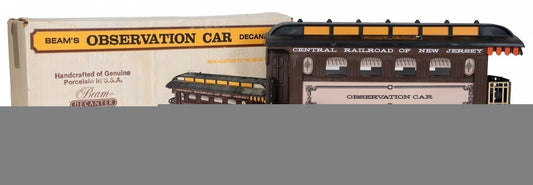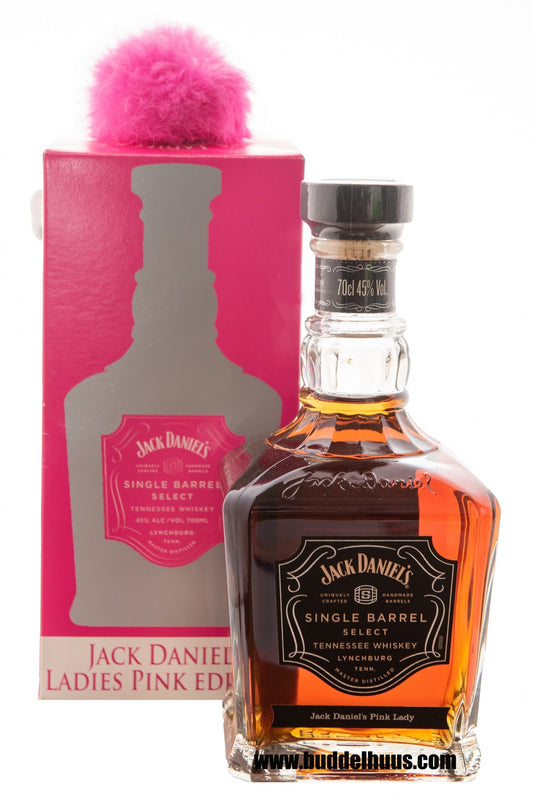Our Whiskey Range
-
Shenk's Homestead Sour Mash 2019
Regular price CHF 429.00Regular priceUnit price per
-
Jim Beam 150 Months Old Observation Car Decanter (1980s)
Regular price CHF 915.00Regular priceUnit price per
-
Jim Beam 100 Months Old Yellow Caboose Decanter (1980s)
Regular price CHF 688.00Regular priceUnit price per
-
Jim Beam 100 Months Old Lumber Car Decanter (1986)
Regular price CHF 1,110.00Regular priceUnit price per
-
Suntory Reserve King Kong Empire State Building
Regular price CHF 350.00Regular priceUnit price per
-
Suntory Very Rare Old Cowboy
Regular price CHF 399.00Regular priceUnit price per
-
Suntory Old Whisky Year of the Ox Decanter
Regular price CHF 818.00Regular priceUnit price per
-
Suntory Pure Malt 2000 Millennium Decanter
Regular price CHF 665.00Regular priceUnit price per
-
Suntory Royal 12 yo Year of the Pig Decanter
Regular price CHF 815.00Regular priceUnit price per
-
Suntory Royal 12 yo Year of the Rooster Decanter
Regular price CHF 800.00Regular priceUnit price per
-
Jack Daniel's No. 27 Gold Maple Wood Finish / Year of the Ox
Regular price CHF 440.00Regular priceUnit price per
-
Jack Daniel's Single Barrel Select 2016 / Pink Lady
Regular price CHF 689.00Regular priceUnit price per
-
Jack Daniel's 1907 Brand
Regular price CHF 685.00Regular priceUnit price per
-
I.W. Harper Gold Medal (1970s)
Regular price CHF 699.00Regular priceUnit price per
-
I.W. Harper Cabernet Cask Reserve
Regular price CHF 350.00Regular priceUnit price per
-
I.W. Harper President's Reserve Decanter
Regular price CHF 1,490.00Regular priceUnit price per
What is Whisk(e)y?
Whisk(e)y is an alcoholic beverage (spirit) obtained through the distillation of grain mash and aged in wooden barrels. The most well-known and widely consumed whisk(e)y varieties predominantly come from Ireland and the USA. Etymology (Origin and Meaning): The term "Whisky" was first mentioned in 1736. It originates from Scottish Gaelic, where the words "uisige beatha" or "uisce beatha" were used to mean "Water of Life" for this spirit. The English later derived the word "Whisky."
History of Whisk(e)y
The history of whisk(e)y dates back to the 5th century. St. Patrick, an Irish national saint, brought the technical equipment and knowledge of distillation to Scotland and Ireland as part of medicinal and perfume production with Christian monks. According to legend, after numerous distillations, the Celts are said to have distilled the first whisk(e)y. However, there is no clear evidence, and it's uncertain whether the origin of whisk(e)y is in Scotland or Ireland. .
The spirit gained popularity through monasteries in the following centuries.
In 1494, Scottish tax records indicated that Lindores Abbey, a Scottish Benedictine monastery, produced whiskey. The monk John Cor purchased the ingredients according to King James IV's instructions, who demanded the production of "aqua vitae" (water of life) for his use.
Private distilleries proliferated, and nearly every Scottish clan began producing its own whisky.
While malt was the main ingredient during this time, the British, after the American colonization, attempted to use grain for whiskey production. North American farmers started fermenting rye and wheat, leading to the creation of the first American distilleries in Virginia, Pennsylvania, and Maryland. .
Production
Various methods are used in whiskey production. Generally, grains are crushed into grist, which is then placed in a mash tun. Warm water is added, converting the starches into sugars. This results in a mash, also known as wort. After transferring to a fermentation vessel, yeast is added, and the mash is fermented.
The resulting liquid, containing between five and ten percent alcohol, reminiscent of beer, undergoes distillation in special apparatus where the liquid is "burned," and vapors of alcohol and flavor compounds are collected. These are then diluted with minimal water. Finally, the "raw" whiskey is aged in wooden barrels, often for years, to mature. After reaching the desired level of maturity, blending, dilution, or filtration often follows before bottling. Some special whiskey types skip these final steps, concluding the production process with bottling .
Malt Whiskey Production
In the production of malt whiskey, the difference lies in the malting of barley to produce malt. Barley is moistened, begins to germinate, and enzymes form, responsible for converting starch into sugar during mashing. Five to eight days after mashing, green malt drying is carried out by applying heat. The use of special ovens, where peat is also burned, creates the typical smoky flavor found in some Scottish malt whiskies. Industrially produced malt whiskey often lacks this aroma. .
Distillation
Scottish Malt and Irish Pot Still Whiskey are typically distilled twice in copper pot stills with swan necks. The first distillation, in the so-called "Wine Still," collects a vapor from the mash with an alcohol content between 20 and 26 percent. This is followed by the "Spirit Still" in the second distillation process, where the alcohol content rises to 60 to 75 percent. The shape and material of the still play a significant role in the taste. Copper has proven to be the most suitable material. The mash "burns" discontinuously in rounded stills, meaning it is processed in portions. Other whiskey types often use "patent or column still" forms, which are distillation columns releasing alcohol content of up to 94.8 percent, offering cost savings through continuous processing.
Alcohol Content
The alcohol content of whiskey is created through mashing. The distillation processes increase the alcohol content, which is collected during the burning in the condensation water of the steam.
To be titled and sold as whiskey in the European Union and Switzerland, the spirit must have a minimum alcohol content of 40 percent.
In many cases, dilution is performed after reaching maturity and before bottling. Depending on the alcohol content at barrel filling, subsequent dilution may lower the alcohol content. Alcohol also evaporates during maturation in barrels. 40 percent is the legally established lower limit, and whiskey cannot have an alcohol content higher than 94.8 percent.
Aging Duration
Within the EU, whiskey must mature for at least three years in barrels with a capacity of 700 liters or less. For Single Malt Whiskey, the minimum aging period is usually ten years, often significantly longer. Good single malt matures between twelve and 21 years. In rare cases, malt whiskey with a shorter maturation time can be found.
Ingredients
While malt whiskey tastes different depending on the brand/type, it fundamentally contains the same ingredients. The differences in taste arise from the quantity and quality.
Malted barley is the main component in malt whiskey production.
Grain whiskey is made from malted and unmalted barley and corn.
Water and, in some cases, E150 sugar coloring for subsequent coloration are also ingredients in whiskey. .
Producing Countries
The most important and significant whiskey-producing countries are Scotland and Ireland, considered the homeland of whiskey.
The USA follows in third place. Worldwide, American Bourbon and Rye whiskey are especially popular.
Canada, for example, is well-known for its globally popular Single Malt, "Glen Breton."
Japan gained importance as a whiskey producer, especially after the "Yamazaki Single Malt Sherry Cask" was named the best whiskey in the world in 2013, although the country has been distilling whiskey since 1924.
India is less known globally as a whiskey-producing country, but it has several whiskies from its own production, such as Amrut, John Paul as a Single Malt, and Imperial Blue, Bagpiper, McDowell's No.1, and Red Knight.
Germany has around 150 whiskey distilleries, and Austria and Switzerland offer mainly Single Malts from their own distilleries.
Australia is known for excellent Single Malts, while England made a name for itself, especially with Welsh whisky from the Penderyn Distillery.
Italy specializes in Malt Whiskey, as does Iceland.
Bourbon and Rye are also available from Brazilian production, and other whiskey exotics come from Chile and France, with less widespread proprietary productions.
















